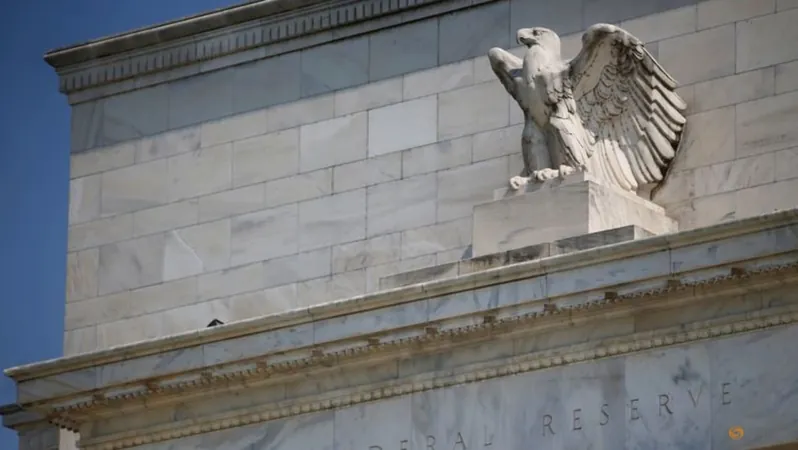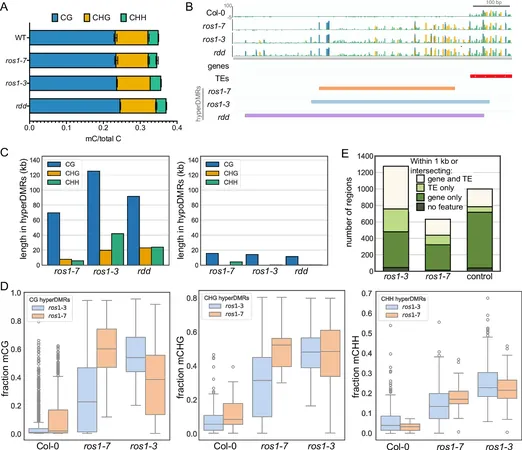
Is It Time for Singapore Investors to Embrace Higher Risks as US Interest Rates Fall?
2025-09-18
Author: Siti
The Fed's Interest Rate Cut: What It Means for Singaporeans
SINGAPORE: The recent decision by the United States Federal Reserve to cut interest rates has left many Singapore investors reconsidering their strategies. This historic reduction, the first in nine months, lowers rates to between 4% and 4.25% — the lowest since late 2022. With two more cuts anticipated this year as a proactive measure to address a cooling labor market, experts believe investors relying on safe havens like fixed deposits might need to seek alternatives.
The Dilemma of Low-Risk Investors
In the face of falling interest rates, many low-risk investors in Singapore are feeling the pressure to explore other options. While searching for higher yields in different asset classes might lead to better returns, it also entails taking on higher risks that could lead to volatility. Mr. Vasu Menon, OCBC's managing director of investment strategy, warns that any shift towards equity or more volatile securities requires a strong risk appetite and a medium-term investment horizon.
The Influence of Global Rates on Local Investments
Interestingly, interest rates in Singapore do not operate independently but are rather influenced by global benchmarks, especially those set by the Fed. Recently, however, local rates have diverged due to significant capital inflows, particularly from investors moving their assets into Singapore or Hong Kong dollars. This influx has caused a decline in the Singapore Overnight Rate Average (SORA), which banks use to price loans.
A Trend of Declining Bank Rates
Interest rates on fixed deposits in Singapore have been steadily dropping since the post-pandemic period, with rates now averaging about 1.5% to 1.6% — a significant decrease from the highs of 2.5% to 3% seen in 2022 to early 2023. Major banks like UOB and OCBC have adjusted rates on savings accounts in response to the changing market environment.
Exploring New Frontiers: Who Should Take the Leap?
As fixed deposit rates continue to decline, Mr. Menon encourages investors to consider alternative investments. For those willing to accept greater risks, this may present an opportunity to make their money work harder. However, Singaporean investors generally have low to medium risk appetites, with studies indicating that many are still hesitant to embrace significant risk, even in pursuit of better returns.
Investing Wisely: Essential Tips
Experts advise preparing adequately before diving into higher-risk investments. Mr. Menon recommends maintaining an emergency savings fund for three to six months' worth of expenses before expanding into riskier portfolios. Diversification is also crucial; rather than concentrating investments in specific stocks or sectors, a varied approach can mitigate risks.
Lower Borrowing Costs: A Silver Lining?
On a more positive note, the Fed's cuts could make loans more affordable, benefitting households and businesses alike. Fixed-rate mortgages are now available at rates of 1.7% to 1.9%, down from over 3% just a year ago. This opens up refinancing opportunities for homeowners, but caution is advised—borrowers should avoid over-extending themselves just because rates are lower. Businesses too can benefit from this easing of financing costs, but they should remain mindful of global economic uncertainties.
In summary, as US interest rates drop, Singapore investors face a pivotal moment. Should they take on more risk for potentially better returns, or play it safe amidst uncertain financial landscapes? The choice could shape their financial future.




 Brasil (PT)
Brasil (PT)
 Canada (EN)
Canada (EN)
 Chile (ES)
Chile (ES)
 Česko (CS)
Česko (CS)
 대한민국 (KO)
대한민국 (KO)
 España (ES)
España (ES)
 France (FR)
France (FR)
 Hong Kong (EN)
Hong Kong (EN)
 Italia (IT)
Italia (IT)
 日本 (JA)
日本 (JA)
 Magyarország (HU)
Magyarország (HU)
 Norge (NO)
Norge (NO)
 Polska (PL)
Polska (PL)
 Schweiz (DE)
Schweiz (DE)
 Singapore (EN)
Singapore (EN)
 Sverige (SV)
Sverige (SV)
 Suomi (FI)
Suomi (FI)
 Türkiye (TR)
Türkiye (TR)
 الإمارات العربية المتحدة (AR)
الإمارات العربية المتحدة (AR)